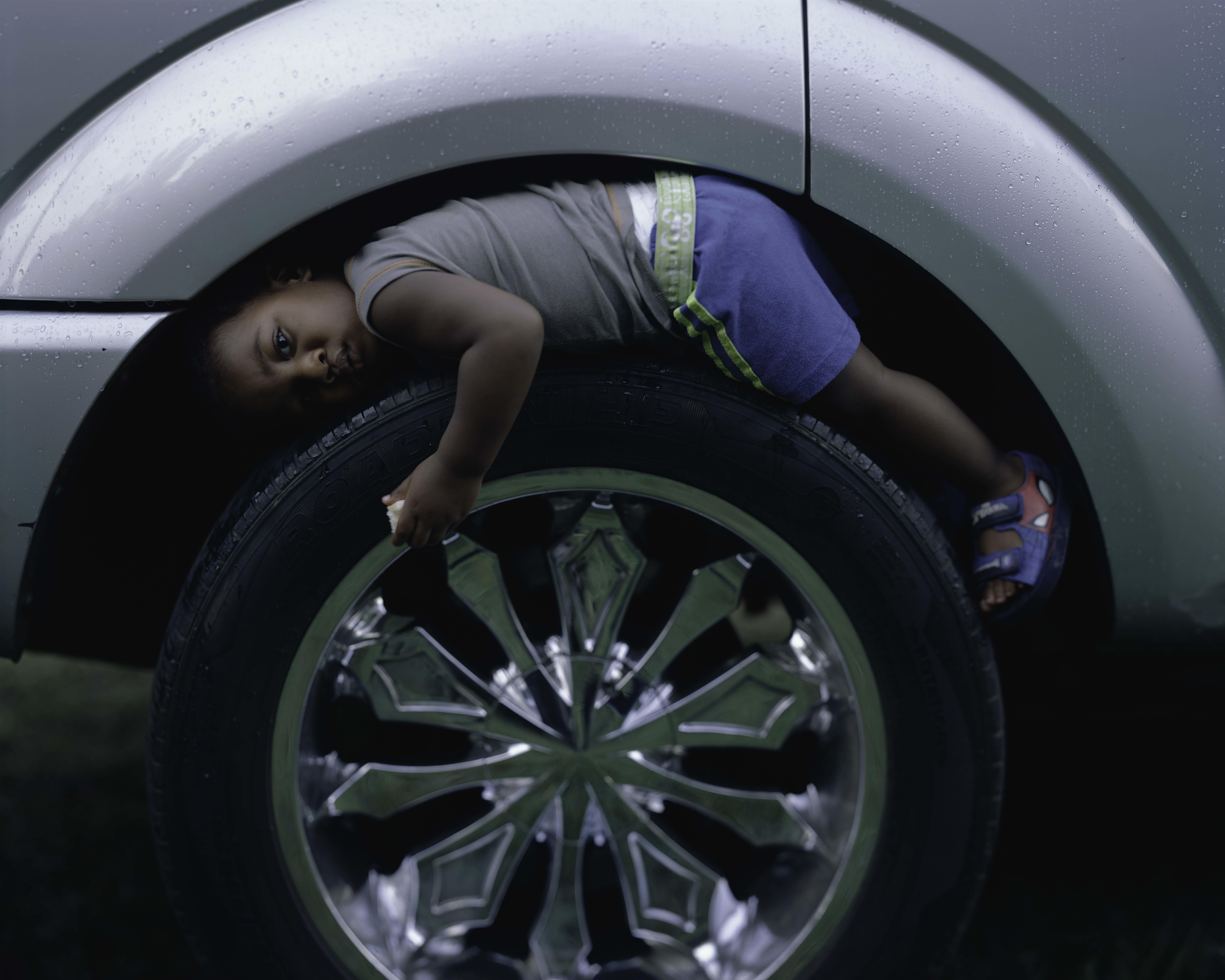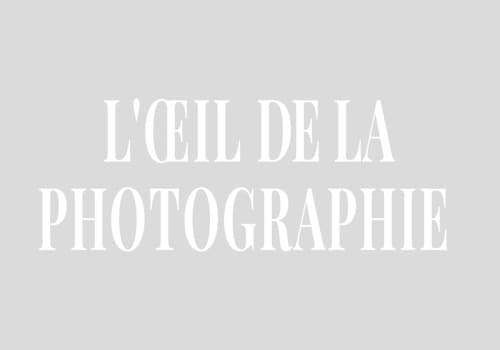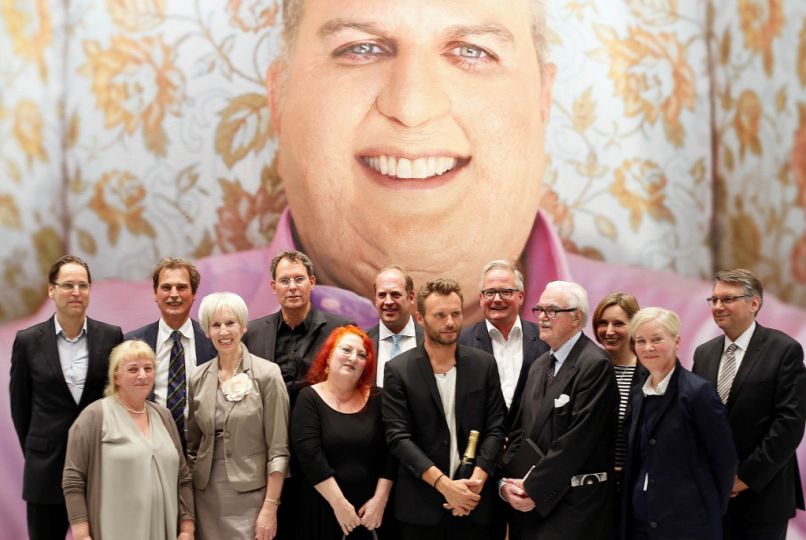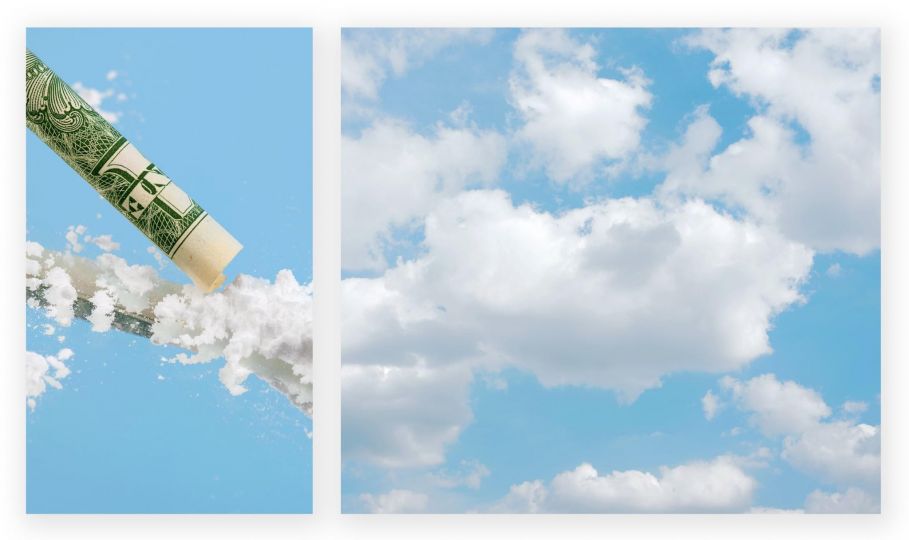Questioning the theme of currency from different angles, the 8th Triennial of Photography Hamburg opens on May 20 with twelve exhibitions featuring over 75 artists. Interview with one of its four leading curator, Rasha Salti.
Arthur Dayras (A.D.): The 8th Triennial of Photography Hamburg, and notably the exhibition Currency, was conceived by a collective of four curators. How did this collective worked together?
Rasha Salti (R.S.): It’s the first time the Triennial organization hired a curatorial collective. Our group was structured around Koyo Kouoh. After agreeding and becoming the director of Zeitz MOCAA in Cape Town (South Africa), she invited Gabriella Beckhurst Feijoo, Oluremi C. Onabandjo and myself to join her. She knew all of us, when we didn’t know each other yet.
A.D.: And all of you quickly gave shape to a collegial direction.
R. S.: Absolutely. We quickly decided to establish an horizontal structure in our exchanges. Dialogue and conversation above all. The pandemic also influenced our way of working. Suddenly, we found ourselves each confined. Gabriella was in London, Oluremi in New York, Koyo in Cape Town and me in Berlin. We met each other on Zoom, and then we began to discuss with institutions in Hamburg, explaining and discussing the concept of the Triennale. At the beginning of the pandemic we were in great uncertainty. We didn’t know when we’d be able to travel, especially when we’d be able be gather in the same space. We had schedule studio visits, we hoped to meet artists and then see the exhibition spaces all together, to understand the logic of the institutions. And this was impossible. We had to resign ourselves to the idea that it would be a Triennial for two years with empty premises, a lot of videoconferences. It’s funny… We complained a lot about not being together. But in the end, we met once a week, more if needed, and a routine was established, and with it, an unexpected and extraordinary form of empathy. I wondered if this form of empathy would have existed if we had seen each other more often. Often, seing others too much can expose oneself to exasperation, to irritation. And finally, between two waves of the epidemic, we were able to gather and mee all the institutions. Then at the end of September 2021, we organized this beautiful symposium, Lucid Knowledge, and now it’s the final countdown.
A.D.: Let’s talk about the Triennale concept, Currency and this eponymous central exhibition, Currency: Photography Beyond Capture, which brings together 29 international artists in the Hall for Contemporary Art – Deichtorhallen Hamburg. What does it mean? How does it structure the exhibition? How would you translate it into French?
R.S.: The same question arises in German. In the language of economists, currency means a devise, a money. But it can also mean “current value”. This leads us to question the current value of photography. A currency is also a formula, not only a national currency, but a notion that circulates. This term covers both the idea of value and the idea of circulation.
A.D.: This notion has been your keystone to link artists with very different aesthetics and photographic approaches.
R.S.: Absolutely. The Triennial is structured around twelve exhibitions and ours, Currency: Photography beyond Capture, is one of those twelve shows. We tried to conceive an exhibition that was not meant to be the “main exhibition”, but that would give clues to the others, that would be part of a mosaic. For example, the Kunsthalle in Hamburg, which has a very fine collection of contemporary art, decided to invite some fairly well-known contemporary artists, such as Wolfgang Tilmans, Sarah Cwynar, Taryn Simon and Walid Raad. Well-known names, which allowed us to open up to other adventures for our own exhibition. We could venture into less visible practices in Hamburg as well as in Germany. I am thinking of Rana Elnemr, an Egyptian artist —who is not an emerging artist—, but who remains unknown in Germany and in Europe in general. Or Carrie Yamaoka, an artist established in the United States, but not quite visible in Europe. Or even Claudia Andujar, who was rediscovered during her beautiful retrospective at the Fondation Cartier in 2020. We took the liberty of not considering age, gender, nationality, but only composing an exhibition by thinking about resonances, in order to produce a very singular experience. There are 29 artists from very different countries and generations, with equally diverse artistic approaches.
A.D.: Some of them you have defended for a long time. I am thinking in particular of Ziad Antar
R. S.: Ziad is an old friend. We worked together in 2009 on a book, Beirut Bereft, Architecture of the Forsaken and Map of the Derelict, which became an exhibition. We are showing a series that I personally feel very strongly about and that represents a turning point of maturation in his work, “Afterimages”. He made it in 2016 in Saudi Arabia after reading the book The Bible was born in Arabia by Lebanese historian Kamal Salibi (1986). This one had caused a great controversy. A specialist in antiquity and early Christianity, Salibi claimed that Moses did not leave Egypt for what is now Palestine, but for Saudi Arabia, more precisely in a region called Asir, on the border with Yemen, a mountainous and very green area where many ancient synagogues can be found. Ziad became fascinated with the book and decided to travel to Asir. His guide was Yahya Amqassim, a talented, dissident and provocative Saudi poet who was born and raised in Asir. Ziad wanted to photograph his journey with a camera inherited from his grandfather, but once he arrived in Saudi Arabia, he realized that the lens was missing, perhaps stolen, and he decided to continue his project and make his photographs without a lens. He documented this land of mythology and history, a land that is little known, little photographed or represented.
A.D.: Photographing without a lens refers to the subtitle of your exhibition, ‘Photography beyond Capture’.
R.S.: Exactly. This exhibition features works by conceptual artists who deals with with photography, and photographers who adopt conceptual postures. Exhibited works invest a borderline zone where questions about visibility, invisibility, materiality and materiality arise. Anne-Marie Filaire is a convincing example. She’s interested in landscapes. We show her project linked to the Grand Paris Express, Terres. Sols profonds du Grand Paris. Private companies and public authorities that have carried out the construction of the Grand Paris have dug up Paris and the Île-de-France region to carry out the work. They extracted thousands of tons of earth. They transported this crushed earth from the limits of Paris to send it elsewhere. She was the only authorized photographer to visit the construction sites, to document these ephemeral landscapes, to show this uncovered belly of Paris.
A.D.: This contemporary belly of Paris, if we could refer to Emile Zola’s Le Ventre de Paris (1873) and to the forged expression to designate the center of Paris.
R. S.: Yes, this earth will become the substratum of another agricultural territory, or will be used to fill in holes in the Parisian underground. It is a great anthropocene enterprise. And it also questions the notion of landscape in photography. You won’t imagine that it is Paris, the classical or even contemporary Paris right in front of you. It gives rather some lunar, desert landscapes. It gives another definition of landscape. Her works echo those of Ragnar Axelsson, a well-known Icelandic photographer, who photographs glaciers and life in the far North. These landscapes are particularly stunning, the effect of volcanic ash on the ice creates a singular impression of drawing, or engraving. These landscapes are also ephemeral because the ice is melting, a harmful consequence of global warming.
A.D.: The Triennial is also strong with eleven other exhibitions, designed by ten partner institutions throughout the city. Tell us more about that.
R. S.: What I would like to emphasize is that among these ten institutions, there are three or four that are not specialized in modern or contemporary art. Our collaboration was an extremely enriching experience, as well as a surprising one. I’d like to mention two museums. The first is the equivalent of an ethnographic museum, the Museum am Rothenbaum – Kulturen und Künste der Welt. It’s the oldest museum in the city, established before the first university was built in the tow. It was a place that embodied not only the power of the city and its business families, but also a place of knowledge and production of world knowledge. It is a place of great importance, if we think in terms of our theme, currency. A new management has been engaged in the museum for some years in a process of reflection on decolonization. How can we decolonize everything that this museum embodies? How to question their collections, the production of knowledge around these collections and the modes of exhibition and power. Well, it happens that their collections are composed, in particular, of large photographic albums made by merchants who traveled and wished to document their journeys. At the end of the 19th and beginning of the 20th century, it was common to give these photographs as gifts. A German family living in Singapore would send photographs as gifts to relatives in Hamburg.
A.D.: It follows, I imagine, colonial periods.
R.S.: That’s it. But what’s interesting is that these are not pictures taken by ethnographers, but rather by rich merchants who traveled and took pictures. In the late XIXᵉ century, early XXᵉ century, it was very common or common to give photo albums as gifts. When you were a German family that had moved to Singapore, you would give as a gift to the family that was still in Hamburg. For the Triennial, the museum invited a Ghanaian artist, Kelvin Haizel, who made a series of interventions from this collection of photographs. He offers a new look at these collections. The other museum I would like to tell you about is the Museum of the History of the City of Hamburg. This one has very large trust collections, a collection that testifies both to the expansion of this city’s long history of trade, but also to the period of German colonization. The museum has invited a collaboration between Rwandan photographer Chris Schwagga, German-Mexican choreographer Yolanda Gutierrez and dancer Eva Lomby to propose an exhibition (installation of images, videos) and performance in relation to the coin collection.
A.D.: The program gives pride of place to works and practices that are considered benevolent today. If the word is somewhat overused today, used in all sorts of ways, it translates in your ensemble of a poetic vision, if not a form of tenderness. Was this desired?
R. S.: Yes. You know, in English, the funny thing is the word tender and the verb to tender, the word evokes tenderness, the benevolent or loving regard towards someone, but the Anglo-Saxons use the verb to refer to the tender. Between the word and the verb, there is a transactional notion. Coming back to photography, it has redesigned the art of portraiture. It is an acquired history. But if we look at the work of some, notably LGBTQI or black photographers, or ethnic and/or cultural minorities, such as Carrie Yamaoka, Elle Perez, and Clifford Prince King their practice reverses or displaces the conventional codes of portraiture because they position themselves from the inside and not the outside. Their cameras propose to be both benevolent and loving, not posed outside the family or community. It proposes a capture from the inside and builds the notion of community through the gaze.
A.D.: This is the opposite of documentary photography which classically comes from the outside in. What you describe starts from the inside and goes towards the world to spread a vision of its own.
R. S.: Exactly.
More information about the exhibitions of the Triennial parcours
The complete list of participating artists is viewable here.
About the Triennale of Photography Hamburg
Initiated by F. C. Gundlach, the Triennial of Photography Hamburg has taken place every three years since 1999 federating Hamburg’s major museums, art spaces, cultural institutions, galleries, and foundations. Since 2014, the Triennial’s organization has been led by the Deichtorhallen Hamburg GmbH.The artistic director of the 8th Triennial of Photography Hamburg 2022 is Koyo Kouoh, who appointed an international curatorial team consisting of Rasha Salti, Gabriella Beckhurst Feijoo and Oluremi C. Onabanjo. The 8th edition is funded by the Freie und Hansestadt Hamburg, Behörde für Kultur und Medien, with further support from BMW Niederlassung Hamburg, Otto Group, White Wall and Zeit-Stiftung (Ebelin and Gerd Bucerius).
8th Triennial of Photography Hamburg 2022: Currency
12 Exhibitions in Hamburg
May 20-September 18, 2022
Opening weekend: May 20-22, 2022
Festival and launch Triennial Expanded: June 2-6, 2022
All additional information at: www.phototriennale.de



















